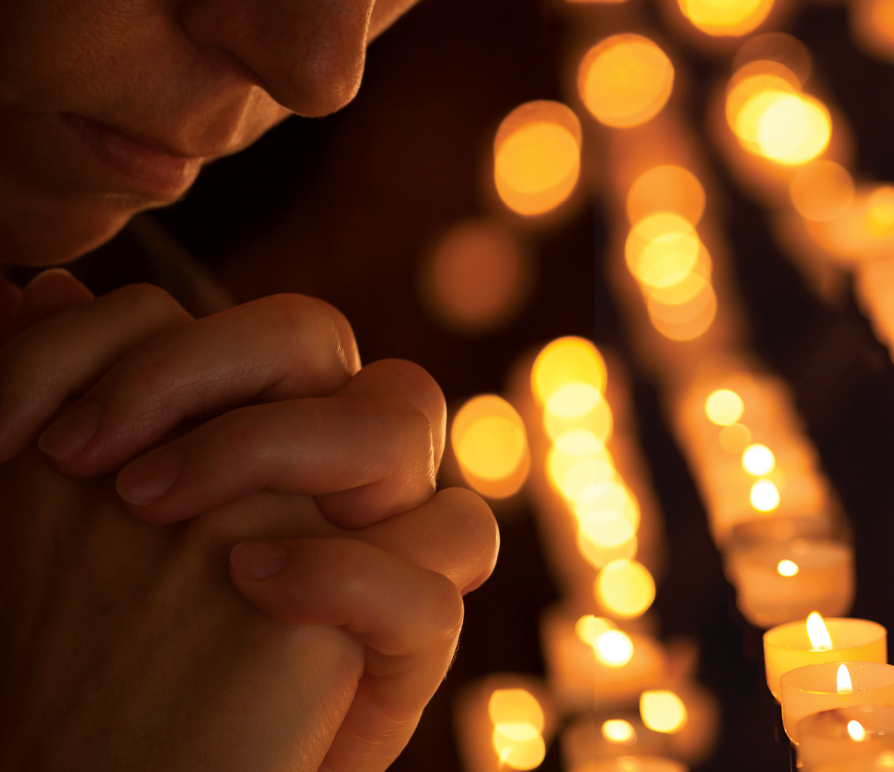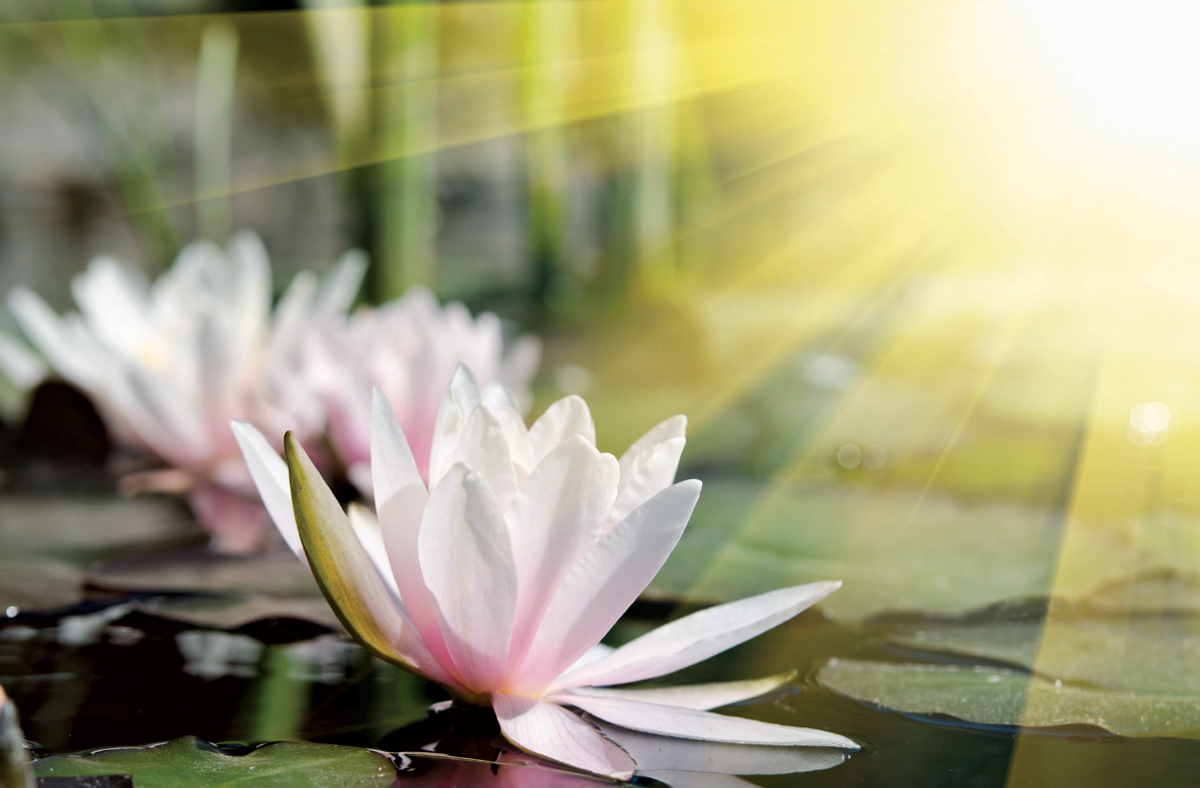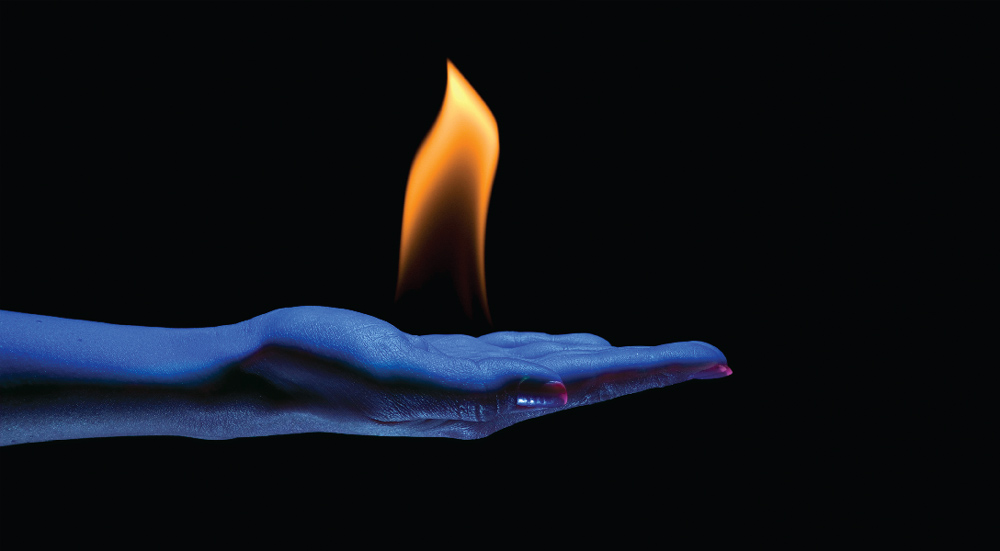Sexuality is the strongest of our biological and psychological forces. Yet it also reflects greater and higher powers, the energies of cosmic consciousness of which it is only an outer manifestation. The polarity that we discover in sexuality is mirrored in the great dualities of nature, from electricity and magnetism to fire and water, to the sun and the moon, and such natural forms as the mountain and the valley.
Working with this universal polarity in order to reach the pure unity behind, is the basis of real Tantric Yoga. Sexuality is an important force that we must understand in the process, whether we choose to express it in a human relationship or renounce it for a solitary path. But sexuality is not the be all and end all of Tantric Yoga. Real Tantric Yoga consists of unfolding the Divine powers within ourselves, the inner God and Goddess, whose natures are the light and energy of consciousness.
The two main Tantric symbols are the Shiva linga and the Shakti yoni, which indicate the main ascending and descending forces in the universe. They have many forms on all levels of manifestation. Understanding them is central to the inner Tantric Yoga and its transformative processes. While the linga and the yoni on a biological level are symbols of sexual energy, male and female, this is only a portion of their greater symbolism as the two prime powers of cosmic existence. It is not all that they are, as some would think, or their main indication.
The Shiva linga is often portrayed in an upright conical form like the male sexual organ. Indeed, some Shiva lingas are quite phallic in their appearance and the linga is often called a phallic symbol by scholars. However, there are many other types of lingas which are circular, elliptical, triangular or columnar in form. The linga is the symbol of the Shiva principle of immutability, stability, strength and endurance, which is reflected in the cosmic masculine principle, the higher side of masculine values and virtues. The sexual side of the linga is not the essence of its meaning. Great devotees of the Shiva linga have their minds and hearts far beyond the type of phallic cults, which is all that some scholars see.
In the Sanskrit language, the word linga refers to a “chief mark” or “characteristic” of something. The term is nowhere simply a synonym for the male sexual organ. Linga indicates what is outstanding and determinative. In this regard, the male sexual organ can be said to be the distinguishing characteristic or linga of a man at a physical level, but many other such marks of distinction exist on various levels.
In Yoga philosophy, the term linga dominant principle in our nature over the physical body; as it is the subtle body, not the physical body, which is reborn. The Shiva linga can symbolize this subtle or light body, which has an egg-like form. The linga can also indicate the upper spinal region from the heart to the head where the influence of the subtle body predominates. The linga is a place where energy is held, generated and sustained.
Similarly, the term yoni in Sanskrit means a place of origin in general. Brahma-yoni, for example, is Brahman or the Absolute as the source of creation. The female sexual organ can be said to be the yoni or creative center of the woman. But the term yoni does not necessarily indicate the female sexual organ or primarily indicate that to those who use it as a sacred symbol. While on a biological level, the yoni is the womb, in its greater symbolism it is also a cave, a valley, a place of origins, and the matrix of space and time. To translate linga and yoni in purely sexual terms does not do justice to their Sanskrit meanings and brings about many needless distortions!
The problem is that the modern mind – particularly under the influence of Freudian psychology – uses sexuality as its primary means of interpreting life, but regards it only as a physical force. It even looks at sexual behavior for understanding higher domains of life like art and spirituality, emphasizing sexual symbolisms or examining the sex life of the persons involved in these pursuits in order to explain their higher experiences! This “sexual reductionism” misses the deeper sensitivities and inspirations of the soul within us. Clearly sexuality is there for everyone, but real spirituality and genuine creativity are not so easy!
Sexuality is an important force that we must understand in the process, whether we choose to express it in a human relationship or renounce it for a solitary path. But sexuality is not the be all and end all of Tantric Yoga.
Symbolism of the Linga and the Yoni
The Shiva linga represents the ascending energy of consciousness and life in nature. We see this in such forms as the mountain, the thunder cloud, the tree, and the upright human being. Many lingas enshrined in Hindu temples like that at Kedarnath, the most important Shiva site in the Himalayas, are rocks in the shapes of small mountains. Other lingas are associated with light: the lingas of the Sun, Moon and Fire. There are twelve famous Jyotir lingas or “light forms” of Shiva at twelve special temples throughout India.
The state of Tamil Nadu in South India has special Shiva linga forms for the five elements with lingas of Earth, Water, Fire, Air and Ether at special temples in the region. Arunachala, the sacred hill of Ramana Maharshi, is the fire linga of Shiva, of which Ramana was said to be a manifestation.
Yet other Shiva lingas are associated with gold or crystal, the light powers in the metal kingdom. The Shiva linga is often described in terms of light, crystal or transparency. Shiva himself is said to be pure light or light in its primal undifferentiated state, from which the diversified lights of the Sun, Moon and Fire arise.
The Shiva linga is connected to the upward pointed triangle, which is also the symbol of fire. The linga is present in the male sexual organ both in plants and in animals. But we should not ignore its other forms. The worship of the linga is more generally a worship of pillars, obelisks, standing stones and pyramids. Tantric linga worship is connected to Vedic pillar worship, which has parallels throughout the ancient world and in indigenous cultures in general, who can still perceive the spiritual powers behind the formations of nature.
The linga is the symbol of the Shiva principle of immutability, stability, strength and endurance, which is reflected in the cosmic masculine principle, the higher side of masculine values and virtues.
To merge one’s mind into that yoni of the heart is to move through all creation to the Absolute beyond, to be reborn into the Supreme!
The Shiva linga is often a pillar of light. In special Vedic fire rituals, the fire can be made to rise in the shape of a pillar which can take the shape of a man! In fact, the term Dharma originally refers to what upholds things and can be symbolized by a pillar. The Shiva linga is the universal pillar of Dharma or Dharma Linga. The pillar is also an inner symbol indicating the erect spine and concentrated mind.
In terms of our human nature, there are several lingas or characteristic marks. The force of Prana is the linga or pillar force upholding the physical body, according to the currents that emanate from it. This is the inner Prana Linga.Our deeper intelligence or Buddhi provides us the power of insight to discern higher realities, the Buddhi Linga. The Atman or higher Self is the ultimate linga or determinative force of our nature that remains steady and elevated (transcendent) through all our life experiences, the Atma Linga.
The Shakti yoni is the complementary horizontal force to the Shiva linga’s vertical force. The yoni is the valley to the mountain, the meadows to the forests, the water to the fire, the woman to the man. Geometrically, the yoni isthe downward pointing triangle, which also indicates water, creation, the flow of grace, Soma or nectar. The yoni is present as the female sexual organ in both plants and animals as the power of the womb. The yoni of the Goddess is worshipped at the great temple of Kamakhya in the state of Assam in northeast India, where a special spring of water flows down a small hill by the great Brahmaputra River.
The worship of the yoni is part of the greater worship of sacred circles and ring stones which, along with standing stones, we find everywhere in the ancient world. Stonehenge in England, and other similar sacred sites that have standing stones formed into great circles, show the union of the linga and the yoni or the cosmic male and female principles. They reflect the universal religion of the two powers that the Hindus call Shiva and Shakti.
The real inner yoni is the cave or small space within the heart (dahara akasha) in which the entire universe dwells, and which holds the deepest inner fire within us and the very wellspring of life. To merge one’s mind into that yoni of the heart is to move through all creation to the Absolute beyond, to be reborn into the Supreme!
The linga and the yoni always go together, first of all on the level of opposites. The linga with the yoni below it shows the union of male and female energies, not just in sexuality, but also as electro-magnetic forces, with the currents of circular Shakti entwining the still upright linga, like an electrical energy transformer. Each serves to support and sustain the other.
The linga in its movement creates a yoni, just as a point in its movement creates a circle. We can see this in the circular movement of the stars, planets and nebulae, as well as in many other diverse phenomena in the world of nature. The central luminary is the linga and its field of revolution is the yoni. The planets form a yoni or circle as they revolve around the Sun as the linga of the solar system, its central principle or axis. Yet the Sun itself is revolving around other stars and creating a yoni or circle of its own.
Uniting the linga and the yoni is not just a matter of sexuality, but of uniting the centrifugal force (linga) with the centripetal force (yoni), or uniting the electric force of Shiva with the magnetic (attractive) force of Shakti. It is uniting the center with the periphery, so that the One and the Infinite merge into a single experience.
The Shakti yoni is the complementary horizontal force to the Shiva linga’s vertical force. The yoni is the valley to the mountain, the meadows to the forests, the water to the fire, the woman to the man.
The linga and the yoni are united in the chakra or the wheel, with the linga as the axis and the yoni as the circumference. The Hindu usage of chakras in rituals and in art also reflects the union of these two powers. Similarly, each chakra of the subtle body shows the union of the Shiva and Shakti energies operative at its particular level of manifestation. There are various other lingas and yonis in the chakras that hold the inner keys to yogic energies.
The spine itself is an inner Shiva linga through which flow the currents of Shakti. Or, from another perspective, Shiva and Shakti are the two currents of energy through the spine, with the Shiva force following an upward and concentrating motion and the Shakti force a horizontal, circular and downward movement. Together they form the various lotuses of the chakras as a spiral of energies.
The Linga, the Yoni and the Yantra
The linga and the yoni are part of a greater mathematical symbolism that is embodied in the figure of the yantra, the geometrical meditation devices of Tantric Yoga. Each deity has its own yantra for worship, which represents its subtle body, as opposed to its visualized human form that represents its gross body. The yantra also indicates the energy pattern created by its mantra.
The most basic yantra form is a six pointed star, with the Shiva force as the upward pointing triangle and Shakti, the downward pointing one. These triangles are also forms of the linga and the yoni. The Sri Yantra, the most elaborate of the yantras, combines five downward facing triangles representing Shakti, and four upward pointing triangles representing Shiva.
In a three-dimensional form, the Sri Yantra is the cosmic mountain Mount Meru, the central world mountain, and the mountain of the spine. In terms of light forms, Sri Yantra represents the Moon and the crown chakra, in which the higher union of Shiva and Shakti occurs, dispensing bliss to our entire being. It is this inner union of Shiva and Shakti that is the real goal of practice.
Yantras are present in the world of nature as the crystalline forms in minerals and in snowflakes. Fractile geometry reflects the vision of the yantra into mathematical terms extending through all that we see. The universe consists of a pulsating network of cosmic forces, of Shiva and Shakti energies, that create various geometrical patterns, through which all forms are structured. The universe is a great yantra of incredible power and intricate beauty that one can contemplate forever.
Meditative Experience of the Linga & the Yoni
The experience of the Shiva linga in yogic meditation is of a pillar of light, energy, peace and eternity, expanding the mind, opening the inner eye and bringing deep tranquility and unshakeable steadiness to the heart. From the crystal light of the linga radiate waves, currents, circles and whirlpools of Shakti, spreading grace, love and wisdom to all. To hold one’s awareness in the power of the linga is an important method to develop unwavering concentration. It calms the mind and puts us in touch with our inner being, the immortal witness beyond the agitation and sorrow of the outer world.
For this purpose, you can find a Shiva linga from anywhere that offers Hindu puja or devotional items. Best is to get the linga form as placed in the yoni, which occurs in stone, crystal, metal or ceramic. At least pick up a picture or drawing of the linga, which one can find in books or on the internet.
The experience of the Shiva linga in yogic meditation is of a pillar of light, energy, peace and eternity, expanding the mind, opening the inner eye and bringing deep tranquility and unshakeable steadiness to the heart.
Visualize this Shiva linga with its circular yoni base in your heart and the conical linga extending up to your head, opening and steadying all the higher centers of consciousness within you. You can use the mantra OM Namahâ Shivàya, to aid in this process, connecting to the Shiva energy behind all that is.
Human sexuality is one of the many manifestations of the cosmic forces of duality, of a greater Divine sexuality as it were, which transcends all creaturely existence. We must learn to see the cosmic energy behind human sexuality rather than reduce spiritual symbolisms to our own physical and emotional inclinations. This is another aspect of yoga in which we must look beyond our human psychology to the universal consciousness, if we want to transcend our creaturely limitations. Then we can see the dance of Shiva and Shakti as a Divine love of Spirit and nature through and beyond all dualities.
Unless one can meditate deeply upon the linga and the yoni as the dual Divine powers behind all existence, one has not yet developed a real understanding of yoga. We must learn to discover the Divine union of the dual great cosmic powers in all that we can see or imagine.
Based on the book “Inner Tantric Yoga” (Lotus Press 2008).


















